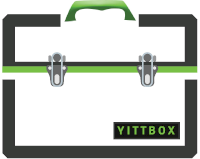Introduction
WordPress powers over 40% of websites, and technical SEO is key to making sure these sites rank well. Here’s a comprehensive technical SEO checklist tailored for WordPress developers to ensure each website is fully optimized for search engines and user experience.
1. Set Up Proper Permalink Structure
- Recommended Structure: Use the “Post Name” option (/post-name/) under Settings > Permalinks for clean, SEO-friendly URLs.
- Best Practices: Avoid special characters or excessive categories and keep URLs concise for better user readability and SEO.
2. Optimize Meta Tags and Titles
- SEO Plugins: Use plugins like Yoast SEO or Rank Math to manage meta titles and descriptions.
- Titles: Each page should have a unique, descriptive title incorporating target keywords.
- Meta Descriptions: Craft compelling meta descriptions with relevant keywords; keep it around 150 characters.
3. Create and Optimize XML Sitemaps
- XML Sitemap: Generate one through your SEO plugin to help search engines crawl your content efficiently.
- Submit to Search Engines: Submit your sitemap to Google Search Console and Bing Webmaster Tools for better indexing.
4. Ensure Mobile Optimization
- Responsive Design: Ensure your site is mobile-friendly. Use Google’s Mobile-Friendly Test to verify.
- Plugins and Themes: Opt for mobile-responsive WordPress themes and verify that custom plugins don’t disrupt the user experience on mobile.
-
5. Improve Site Speed
- Plugins: Use W3 Total Cache or WP Rocket to minimize CSS and JavaScript.
- Image Optimization: Compress images using plugins like Smush or Imagify to reduce file sizes.
- Hosting: Consider a high-speed WordPress hosting provider like SiteGround or WP Engine for better performance.
6. Implement SSL and HTTPS
- SSL Certificate: Install an SSL certificate to secure data and improve rankings.
- Force HTTPS: Use plugins like Really Simple SSL to redirect all traffic to HTTPS.
7. Enable Schema Markup
- Structured Data: Add schema to help search engines understand your content contextually. You can add structured data for articles, products, FAQs, etc.
- Plugins: Use Schema Pro or Yoast SEO for built-in schema options.
8. Canonicalize Duplicate Content
- Canonicals: Ensure canonical tags are correctly set up, especially on category pages, to prevent duplicate content issues.
- Plugins: Many SEO plugins, like Yoast, handle canonical tags automatically, or you can customize them in HTML headers.
9. Set Up and Analyze Google Search Console
- URL Inspection Tool: Use this tool to monitor indexing status, troubleshoot errors, and submit new pages.
- Core Web Vitals: Track Core Web Vitals reports for insights on user experience, load speeds, and mobile friendliness.
10. Optimize for Core Web Vitals
- Largest Contentful Paint (LCP): Aim for LCP under 2.5 seconds by compressing images and improving server response times.
- First Input Delay (FID): Ensure FID is below 100 milliseconds by reducing JavaScript execution.
- Cumulative Layout Shift (CLS): Keep CLS below 0.1 by setting dimensions for all media and ads.
11. Optimize Internal Linking Structure
- Internal Links: Use relevant keywords for anchor text when linking to internal pages to boost navigation and rankings.
- Broken Links: Regularly scan your site for broken links with tools like Broken Link Checker.
12. Manage 301 Redirects and 404 Errors
- 301 Redirects: Set up redirects for outdated pages to retain link equity using Redirection plugin.
- Custom 404 Page: Create a custom 404 page to guide users back to key content on your site.
13. Optimize Robots.txt and .htaccess
- Robots.txt: Block unimportant pages (e.g., admin pages) from being indexed to optimize crawl budget.
- .htaccess Optimization: Use this file for browser caching, security, and redirect rules to enhance performance.
14. Monitor with Google Analytics
- Goals and Events: Set up conversion tracking to measure SEO effectiveness.
- User Behavior: Regularly check metrics like bounce rate, session duration, and popular content to guide SEO strategy.
Following this checklist will enhance your site’s technical SEO, improve its visibility in search engines, and offer a better user experience. For further resources on SEO best practices, visit Moz and Google’s SEO Starter Guide.







